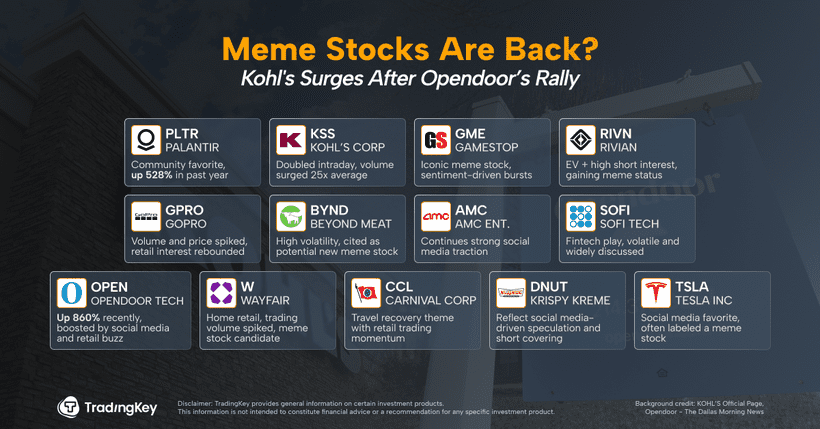Heritage Commerce Reports 15% Q2 Growth

Key Points
- Adjusted earnings per share of $0.21 surpassed estimates in Q2 2025, while GAAP revenue also beat forecasts, reaching $47.8 million in Q2 2025.
- A significant legal settlement charge lowered reported net income to $6.4 million, down 31% from the prior year in Q2 2025.
- Loan growth and net interest margin improved during Q2 2025, but deposit outflows and real estate loan concentration remain watch areas.
Heritage Commerce (NASDAQ:HTBK), a bank focused on serving small and medium-sized businesses in the San Francisco Bay and Silicon Valley, announced its earnings for Q2 2025 on July 24, 2025. The headline news was its adjusted (non-GAAP) earnings per share of $0.21, which topped analyst estimates of $0.19 in Q2 2025. GAAP revenue of $47.8 million also came in ahead of the $47.3 million expectation in Q2 2025. However, a large legal settlement charge pushed net income to $6.4 million, down 31% from the second quarter of the prior year. Overall, the quarter reflected solid operating momentum in lending and margins, but also exposed some persistent risks and charges below the surface.
| Metric | Q2 2025 | Q2 Estimate | Q2 2024 | Y/Y Change |
|---|---|---|---|---|
| EPS (Non-GAAP) | $0.21 | $0.19 | $0.15 | 40.0% |
| Revenue (GAAP) | $47.8 million | $47.3 million | $41.7 million | 15.0% |
| Net Income (GAAP) | $6.4 million | $9.2 million | (31.0%) | |
| Pre-Provision Net Revenue (Non-GAAP) | $9.4 million | $13.5 million | (30.4%) | |
| Efficiency Ratio (Non-GAAP) | 61.0% | 67.6% | (6.6) pp |
Source: Analyst estimates provided by FactSet. Management expectations based on management's guidance, as provided in Q1 2025 earnings report.
Business Overview and Focus
Heritage Commerce is a regional bank based in California, operating seventeen full-service branches centered around the Bay Area and Silicon Valley. Its main clients are local small and medium-sized businesses that rely on commercial lending, cash management, and deposit services. The bank's community approach lets it tailor services while maintaining close relationships with customers.
Recently, the company has focused on strengthening core operations through leadership changes, investments in technology, and an emphasis on risk management. The focus areas include deposit growth, loan quality, regulatory compliance, and enhancing digital banking capabilities. Careful balance sheet management, attention to credit risk, and improving cost control are central to its strategy for long-term stability.
Quarter Highlights and Financial Developments
Adjusted earnings per share was up 40% compared to Q2 2024, outpacing consensus by $0.02. Total revenue grew by 15% compared to Q2 2024, also exceeding analyst forecasts. The bank attributed some of this growth to a widening net interest margin, which improved to 3.54% (non-GAAP) in Q2 2025. This metric measures the difference between interest income from loans and securities and the cost paid to depositors, expressed as a percent of average earning assets. The company also posted a $47.4 million (1% quarter-over-quarter) increase in loans held for investment, continuing a trend of diversified loan origination.
However, deposit balances declined by $55.9 million, described by management as a "seasonal" outflow. Still, year-over-year, deposits grew 4%. with a reported one location closure expense that reflects ongoing strategizing around efficiency. Noninterest income, which includes service charges and other fees, also ticked up by 10% from the previous quarter (Q2 2025 vs. Q1 2025), mostly due to higher termination and facility fees. On the cost side, the legal settlement and related accruals of $9.2 million increased noninterest expenses sharply in Q2 2025, overshadowing otherwise disciplined spending and weighing on reported net income.
Asset quality stayed consistent. Provisions for loan losses increased to $516,000, mainly due to loan growth in Q2 2025. Net charge-offs, which show actual losses from loans that could not be collected, fell from $965,000 in Q1 2025 to $145,000. The share of nonperforming assets remained stable at 0.11% of total assets, with allowance for credit losses covering nonperforming loans by nearly eightfold (787%) as of Q2 2025. Still, classified assets—loans with signs of higher risk—crept up modestly from the year-ago period.
Management executed $1.9 million in share repurchases, acquiring 207,989 shares. The board also extended its share buyback program, signifying continued preference for returning capital to shareholders. The quarterly cash dividend was maintained at $0.13 per share, marking no change versus previous periods. The company’s tangible book value per share increased 3% compared to Q2 2024.
One important theme is the high concentration of commercial real estate (CRE) loans, which accounted for about $2.0 billion of total loans as of June 30, 2025. CRE loans are considered riskier if the local commercial property market declines. This category of lending is sizable compared to regulatory capital, with such loans representing 311% of total risk-based capital as of December 31, 2024. The company’s common equity tier 1 capital ratio was 13.3%, a robust level versus regulatory minimums, though slightly lower than in previous quarters.
Technology and cybersecurity remain front and center, as the company continues to invest in digital platforms and capabilities to compete with larger banks and fintech providers. The release noted "continued enhancement" of these capabilities but did not provide explicit figures. Investments are focused on protecting customer data and ensuring smooth digital banking experiences, which are important for the company.
Looking Ahead: Guidance and Key Considerations
Management described the outlook as constructive but did not provide explicit quantitative guidance for the coming quarters. The focus remains on generating loan growth, sustaining a healthy net interest margin, and keeping operating expenses under control. The company highlighted its strong capital and liquidity base as factors positioning it to handle ongoing market competition and regulatory requirements.
In the absence of detailed forward numbers, investors will need to monitor ongoing risks closely. Deposit stability is a key concern because of competition and mix changes in deposit types. The high proportion of CRE loans—representing 311% of total risk-based capital as of December 31, 2024—also stands out as a potential area of risk, especially if property markets soften. Cost trends, including investments in technology and any future nonrecurring expenses, will also be important for the consistency of earnings. The company maintained its quarterly dividend at $0.13 per share, signaling a stable capital return policy.
Revenue and net income presented using U.S. generally accepted accounting principles (GAAP) unless otherwise noted.
Where to invest $1,000 right now
When our analyst team has a stock tip, it can pay to listen. After all, Stock Advisor’s total average return is 1,040%* — a market-crushing outperformance compared to 182% for the S&P 500.
They just revealed what they believe are the 10 best stocks for investors to buy right now, available when you join Stock Advisor.
*Stock Advisor returns as of July 21, 2025
JesterAI is a Foolish AI, based on a variety of Large Language Models (LLMs) and proprietary Motley Fool systems. All articles published by JesterAI are reviewed by our editorial team, and The Motley Fool takes ultimate responsibility for the content of this article. JesterAI cannot own stocks and so it has no positions in any stocks mentioned. The Motley Fool has no position in any of the stocks mentioned. The Motley Fool has a disclosure policy.





